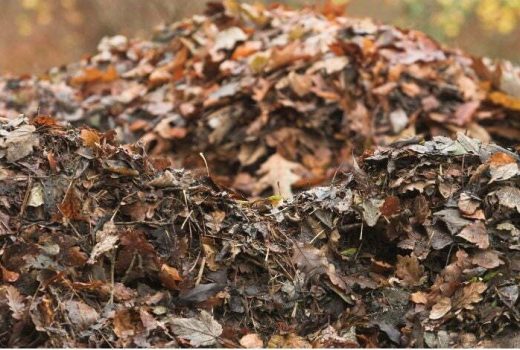Leaf mulch is a natural, renewable resource for your gardening and landscaping needs. Not only does it boost the health of your garden – adding nutrients and improving drainage – but it also prevents weeds from growing, dramatically cutting down on maintenance. This continuously feeds the soil while also making sure your plants don’t need any additional fertilizer.
The purpose of this post is to provide the reader with an introduction to mulching in general, and leaf mulch in particular. We will discuss its benefits, give guidelines on how to use it, and some information about why it is needed, and some tips on where and when to apply.
Types of Leaf Mulch:
Leaf mulch can be divided into two types:
- Ground Mulch
- Bagged Mulch
Ground Mulch
Ground mulch is recycled and produced by shredding and milling leaves and other organic material like garden debris. It is available in a number of grades, including premium, agricultural, standard ground bark, fine ground bark, green sand, wood fiber composite, and screened green sand.
Bagged Mulch
Bagged mulch provides an alternative to mulching with ground mulch. Bagged mulch is available in two forms: shredded or chipped which range from fine texture to coarse.
How to Make leaf mulch?
Producing mulch from leaves is something you can do easily at home. You don’t need to follow an intricate process, use expensive tools, or pay high prices to have plenty of leaf mulch for your garden. If you have leaves, you have the means to make your homemade leaf mulch!
Here are the basic steps to follow when making your own leaf mulch.
- Collect leaves
- Preheat oven to 150F
- Soak overnight in water
- Spread on newspaper-covered baking sheets
- Bake for one to two hours, stirring every 30 minutes
- Make sure the leaves are dry, crumbly, and no longer green
Basic Tools for leaf mulch:
Materials you will need
- Containers for collecting leaves
- Shredder
- Bag for collecting mulch
- Find a place to collect the leaves
- Collect leaves using a rake or a blower
- Collect leaves in a series of containers so they don’t dry out
- Sort leaves by type and starts shredding them in a shredder
How to use leaf mulch?
The process of applying leaf mulch begins with removing the existing grass and debris from the lawn area. Next, apply a layer of organic mulch over the area. This will form a layer that will prevent your lawn from drying out and losing its color. After the mulch has been applied, a final layer of organic material is added. This layer of organic material will further protect the grass from drying out and losing its color.
It can be applied at any time of the year but should be mixed thoroughly before application. When applying mulch to your lawn, it is best to use a rake rather than a shovel.
Pros and Cons of Using Leaf Mulch?
There are many advantages to using leaf mulch in your garden. It provides nutrients for the plants, reduces erosion, and is biodegradable. You can spread it around your garden or use it as an ingredient in recipes.
There are a few disadvantages to using leaf mulch as well. It can cause skin irritation, rashes, and allergic reactions if it’s applied to your face or skin. It can also leave stains on clothing and furniture if applied improperly.
FAQs
Does leaf mulch last for a long time?
A quality mulch can last for years if it is properly hydrated and treated regularly.
What does leaf mulch do?
It’s also great for improving your soil quality. Leaf mulch is made from decomposed leaves, grass, and branches that have been dried in the sun. When properly made, the leaves, grass, and branches can be used to create a nutrient-rich soil amendment that can be used as fertilizer in your garden.

